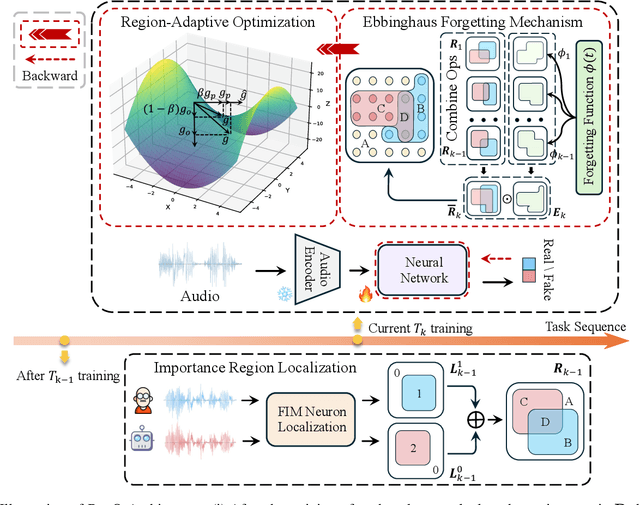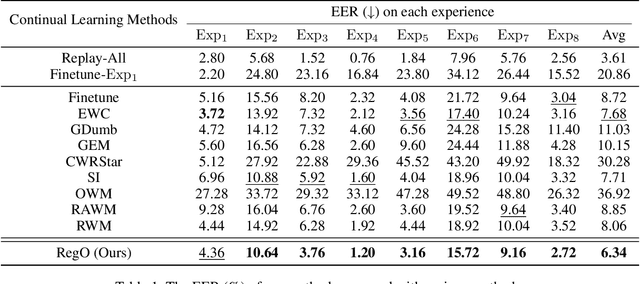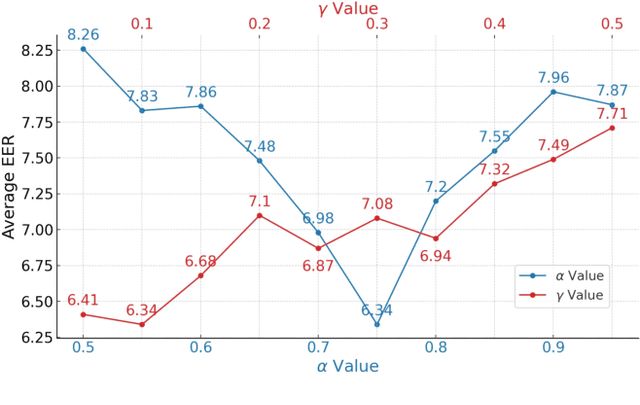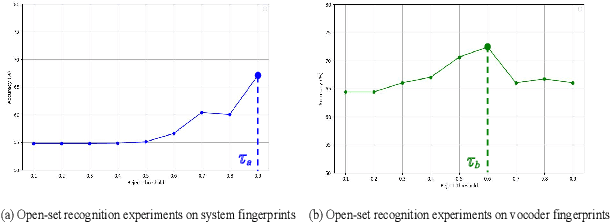Hao Gu
Hierarchical Tree Search-based User Lifelong Behavior Modeling on Large Language Model
May 26, 2025Abstract:Large Language Models (LLMs) have garnered significant attention in Recommendation Systems (RS) due to their extensive world knowledge and robust reasoning capabilities. However, a critical challenge lies in enabling LLMs to effectively comprehend and extract insights from massive user behaviors. Current approaches that directly leverage LLMs for user interest learning face limitations in handling long sequential behaviors, effectively extracting interest, and applying interest in practical scenarios. To address these issues, we propose a Hierarchical Tree Search-based User Lifelong Behavior Modeling framework (HiT-LBM). HiT-LBM integrates Chunked User Behavior Extraction (CUBE) and Hierarchical Tree Search for Interest (HTS) to capture diverse interests and interest evolution of user. CUBE divides user lifelong behaviors into multiple chunks and learns the interest and interest evolution within each chunk in a cascading manner. HTS generates candidate interests through hierarchical expansion and searches for the optimal interest with process rating model to ensure information gain for each behavior chunk. Additionally, we design Temporal-Ware Interest Fusion (TIF) to integrate interests from multiple behavior chunks, constructing a comprehensive representation of user lifelong interests. The representation can be embedded into any recommendation model to enhance performance. Extensive experiments demonstrate the effectiveness of our approach, showing that it surpasses state-of-the-art methods.
Hearing from Silence: Reasoning Audio Descriptions from Silent Videos via Vision-Language Model
May 19, 2025Abstract:Humans can intuitively infer sounds from silent videos, but whether multimodal large language models can perform modal-mismatch reasoning without accessing target modalities remains relatively unexplored. Current text-assisted-video-to-audio (VT2A) methods excel in video foley tasks but struggle to acquire audio descriptions during inference. We introduce the task of Reasoning Audio Descriptions from Silent Videos (SVAD) to address this challenge and investigate vision-language models' (VLMs) capabilities on this task. To further enhance the VLMs' reasoning capacity for the SVAD task, we construct a CoT-AudioCaps dataset and propose a Chain-of-Thought-based supervised fine-tuning strategy. Experiments on SVAD and subsequent VT2A tasks demonstrate our method's effectiveness in two key aspects: significantly improving VLMs' modal-mismatch reasoning for SVAD and effectively addressing the challenge of acquiring audio descriptions during VT2A inference.
$\mathcal{A}LLM4ADD$: Unlocking the Capabilities of Audio Large Language Models for Audio Deepfake Detection
May 16, 2025Abstract:Audio deepfake detection (ADD) has grown increasingly important due to the rise of high-fidelity audio generative models and their potential for misuse. Given that audio large language models (ALLMs) have made significant progress in various audio processing tasks, a heuristic question arises: Can ALLMs be leveraged to solve ADD?. In this paper, we first conduct a comprehensive zero-shot evaluation of ALLMs on ADD, revealing their ineffectiveness in detecting fake audio. To enhance their performance, we propose $\mathcal{A}LLM4ADD$, an ALLM-driven framework for ADD. Specifically, we reformulate ADD task as an audio question answering problem, prompting the model with the question: "Is this audio fake or real?". We then perform supervised fine-tuning to enable the ALLM to assess the authenticity of query audio. Extensive experiments are conducted to demonstrate that our ALLM-based method can achieve superior performance in fake audio detection, particularly in data-scarce scenarios. As a pioneering study, we anticipate that this work will inspire the research community to leverage ALLMs to develop more effective ADD systems.
Relative Contrastive Learning for Sequential Recommendation with Similarity-based Positive Pair Selection
Apr 27, 2025Abstract:Contrastive Learning (CL) enhances the training of sequential recommendation (SR) models through informative self-supervision signals. Existing methods often rely on data augmentation strategies to create positive samples and promote representation invariance. Some strategies such as item reordering and item substitution may inadvertently alter user intent. Supervised Contrastive Learning (SCL) based methods find an alternative to augmentation-based CL methods by selecting same-target sequences (interaction sequences with the same target item) to form positive samples. However, SCL-based methods suffer from the scarcity of same-target sequences and consequently lack enough signals for contrastive learning. In this work, we propose to use similar sequences (with different target items) as additional positive samples and introduce a Relative Contrastive Learning (RCL) framework for sequential recommendation. RCL comprises a dual-tiered positive sample selection module and a relative contrastive learning module. The former module selects same-target sequences as strong positive samples and selects similar sequences as weak positive samples. The latter module employs a weighted relative contrastive loss, ensuring that each sequence is represented closer to its strong positive samples than its weak positive samples. We apply RCL on two mainstream deep learning-based SR models, and our empirical results reveal that RCL can achieve 4.88% improvement averagely than the state-of-the-art SR methods on five public datasets and one private dataset.
Delta Decompression for MoE-based LLMs Compression
Feb 24, 2025Abstract:Mixture-of-Experts (MoE) architectures in large language models (LLMs) achieve exceptional performance, but face prohibitive storage and memory requirements. To address these challenges, we present $D^2$-MoE, a new delta decompression compressor for reducing the parameters of MoE LLMs. Based on observations of expert diversity, we decompose their weights into a shared base weight and unique delta weights. Specifically, our method first merges each expert's weight into the base weight using the Fisher information matrix to capture shared components. Then, we compress delta weights through Singular Value Decomposition (SVD) by exploiting their low-rank properties. Finally, we introduce a semi-dynamical structured pruning strategy for the base weights, combining static and dynamic redundancy analysis to achieve further parameter reduction while maintaining input adaptivity. In this way, our $D^2$-MoE successfully compact MoE LLMs to high compression ratios without additional training. Extensive experiments highlight the superiority of our approach, with over 13% performance gains than other compressors on Mixtral|Phi-3.5|DeepSeek|Qwen2 MoE LLMs at 40$\sim$60% compression rates. Codes are available in https://github.com/lliai/D2MoE.
Region-Based Optimization in Continual Learning for Audio Deepfake Detection
Dec 16, 2024



Abstract:Rapid advancements in speech synthesis and voice conversion bring convenience but also new security risks, creating an urgent need for effective audio deepfake detection. Although current models perform well, their effectiveness diminishes when confronted with the diverse and evolving nature of real-world deepfakes. To address this issue, we propose a continual learning method named Region-Based Optimization (RegO) for audio deepfake detection. Specifically, we use the Fisher information matrix to measure important neuron regions for real and fake audio detection, dividing them into four regions. First, we directly fine-tune the less important regions to quickly adapt to new tasks. Next, we apply gradient optimization in parallel for regions important only to real audio detection, and in orthogonal directions for regions important only to fake audio detection. For regions that are important to both, we use sample proportion-based adaptive gradient optimization. This region-adaptive optimization ensures an appropriate trade-off between memory stability and learning plasticity. Additionally, to address the increase of redundant neurons from old tasks, we further introduce the Ebbinghaus forgetting mechanism to release them, thereby promoting the capability of the model to learn more generalized discriminative features. Experimental results show our method achieves a 21.3% improvement in EER over the state-of-the-art continual learning approach RWM for audio deepfake detection. Moreover, the effectiveness of RegO extends beyond the audio deepfake detection domain, showing potential significance in other tasks, such as image recognition. The code is available at https://github.com/cyjie429/RegO
PRECISE: Pre-training Sequential Recommenders with Collaborative and Semantic Information
Dec 09, 2024Abstract:Real-world recommendation systems commonly offer diverse content scenarios for users to interact with. Considering the enormous number of users in industrial platforms, it is infeasible to utilize a single unified recommendation model to meet the requirements of all scenarios. Usually, separate recommendation pipelines are established for each distinct scenario. This practice leads to challenges in comprehensively grasping users' interests. Recent research endeavors have been made to tackle this problem by pre-training models to encapsulate the overall interests of users. Traditional pre-trained recommendation models mainly capture user interests by leveraging collaborative signals. Nevertheless, a prevalent drawback of these systems is their incapacity to handle long-tail items and cold-start scenarios. With the recent advent of large language models, there has been a significant increase in research efforts focused on exploiting LLMs to extract semantic information for users and items. However, text-based recommendations highly rely on elaborate feature engineering and frequently fail to capture collaborative similarities. To overcome these limitations, we propose a novel pre-training framework for sequential recommendation, termed PRECISE. This framework combines collaborative signals with semantic information. Moreover, PRECISE employs a learning framework that initially models users' comprehensive interests across all recommendation scenarios and subsequently concentrates on the specific interests of target-scene behaviors. We demonstrate that PRECISE precisely captures the entire range of user interests and effectively transfers them to the target interests. Empirical findings reveal that the PRECISE framework attains outstanding performance on both public and industrial datasets.
Reject Threshold Adaptation for Open-Set Model Attribution of Deepfake Audio
Dec 02, 2024



Abstract:Open environment oriented open set model attribution of deepfake audio is an emerging research topic, aiming to identify the generation models of deepfake audio. Most previous work requires manually setting a rejection threshold for unknown classes to compare with predicted probabilities. However, models often overfit training instances and generate overly confident predictions. Moreover, thresholds that effectively distinguish unknown categories in the current dataset may not be suitable for identifying known and unknown categories in another data distribution. To address the issues, we propose a novel framework for open set model attribution of deepfake audio with rejection threshold adaptation (ReTA). Specifically, the reconstruction error learning module trains by combining the representation of system fingerprints with labels corresponding to either the target class or a randomly chosen other class label. This process generates matching and non-matching reconstructed samples, establishing the reconstruction error distributions for each class and laying the foundation for the reject threshold calculation module. The reject threshold calculation module utilizes gaussian probability estimation to fit the distributions of matching and non-matching reconstruction errors. It then computes adaptive reject thresholds for all classes through probability minimization criteria. The experimental results demonstrate the effectiveness of ReTA in improving the open set model attributes of deepfake audio.
Open Vocabulary Monocular 3D Object Detection
Nov 25, 2024Abstract:In this work, we pioneer the study of open-vocabulary monocular 3D object detection, a novel task that aims to detect and localize objects in 3D space from a single RGB image without limiting detection to a predefined set of categories. We formalize this problem, establish baseline methods, and introduce a class-agnostic approach that leverages open-vocabulary 2D detectors and lifts 2D bounding boxes into 3D space. Our approach decouples the recognition and localization of objects in 2D from the task of estimating 3D bounding boxes, enabling generalization across unseen categories. Additionally, we propose a target-aware evaluation protocol to address inconsistencies in existing datasets, improving the reliability of model performance assessment. Extensive experiments on the Omni3D dataset demonstrate the effectiveness of the proposed method in zero-shot 3D detection for novel object categories, validating its robust generalization capabilities. Our method and evaluation protocols contribute towards the development of open-vocabulary object detection models that can effectively operate in real-world, category-diverse environments.
Utilizing Speaker Profiles for Impersonation Audio Detection
Aug 30, 2024



Abstract:Fake audio detection is an emerging active topic. A growing number of literatures have aimed to detect fake utterance, which are mostly generated by Text-to-speech (TTS) or voice conversion (VC). However, countermeasures against impersonation remain an underexplored area. Impersonation is a fake type that involves an imitator replicating specific traits and speech style of a target speaker. Unlike TTS and VC, which often leave digital traces or signal artifacts, impersonation involves live human beings producing entirely natural speech, rendering the detection of impersonation audio a challenging task. Thus, we propose a novel method that integrates speaker profiles into the process of impersonation audio detection. Speaker profiles are inherent characteristics that are challenging for impersonators to mimic accurately, such as speaker's age, job. We aim to leverage these features to extract discriminative information for detecting impersonation audio. Moreover, there is no large impersonated speech corpora available for quantitative study of impersonation impacts. To address this gap, we further design the first large-scale, diverse-speaker Chinese impersonation dataset, named ImPersonation Audio Detection (IPAD), to advance the community's research on impersonation audio detection. We evaluate several existing fake audio detection methods on our proposed dataset IPAD, demonstrating its necessity and the challenges. Additionally, our findings reveal that incorporating speaker profiles can significantly enhance the model's performance in detecting impersonation audio.
 Add to Chrome
Add to Chrome Add to Firefox
Add to Firefox Add to Edge
Add to Edge